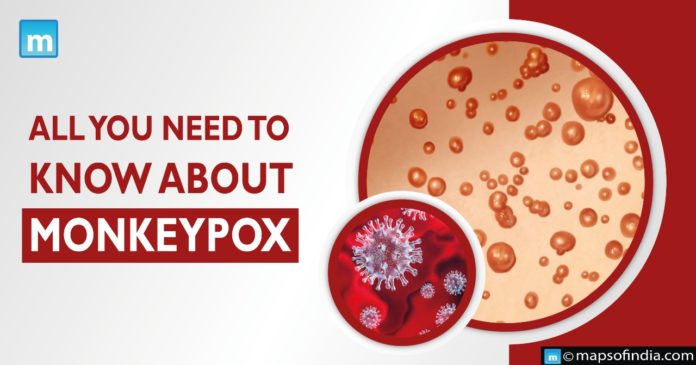The monkeypox virus causes the disease monkeypox. It is a zoonotic viral illness that may pass from animals to people. In addition to this, there is also the possibility of it spreading from person to person.
Symptoms of Monkeypox
- Monkeypox can induce a variety of symptoms. While some people experience moderate symptoms, others could develop more significant ones requiring medical attention.
- Pregnant women, children, and immunocompromised adults are at a greater risk of severe illness or consequences.
- Individuals suffering from Monkeypox may experience fever, headaches, back discomfort, fatigue, muscular pains, and enlarged lymph nodes.
- This is complemented by the appearance of a rash that may last three to four weeks. The rash appears on the face, palms of hands, mouth, soles of feet, throat, eyes, and genital and anal portions of the body.
Chances of severe illness or fatality
- It usually takes a few weeks for monkeypox symptoms to disappear. On the other hand, an infection might cause medical issues and even death in some people.
- Newborn infants, toddlers, and people with preexisting immune weaknesses are more likely to develop severe symptoms and die from Monkeypox.
- Monkeypox complications include subsequent skin infections, pneumonia, disorientation, and eye issues.
- The fatality rate of Monkeypox was previously between 1% and 10%.
- It is crucial to remember that mortality rates vary between environments owing to various factors, such as the availability of health care.
The spread of Monkeypox
- Monkeypox spreads by direct interaction with someone with a monkeypox rash, such as face-to-face, mouth-to-mouth, skin-to-skin, or mouth-to-skin contact, including sexual intercourse.
- When an infected individual touches clothing, bedding, towels, items, devices, or surfaces, the environment might become contaminated with the monkeypox virus. Anyone who comes into contact with these goods may be affected.
- Infection can also occur via inhaling skin flakes or viruses from clothing, beds, or towels. This is referred to as fomite transmission.
Who is at risk of contracting MMonkeypox?
- People who live with or have intimate contact (including sexual relations) with someone who has Monkeypox or has regular interaction with infected animals are most at risk.
- Health staff should practise infection prevention and control methods to protect themselves when caring for monkeypox patients.
- Newborn infants, young children, and persons with underlying immune weaknesses are more likely to develop severe symptoms and, in rare circumstances, die from Monkeypox.
Treatment
- People who have Monkeypox should listen to their doctor’s recommendations.
- Symptoms usually go away on their own, with no need for medication. Pain relievers (analgesics) and fever reducers (antipyretics) can be used to alleviate specific symptoms if necessary.
- It is critical for anyone suffering from Monkeypox to eat well, stay hydrated, and get adequate sleep.
- Self-isolated individuals should take care of their mental wellness by doing things they find calming and pleasurable, remaining connected to loved ones through technology and exercising if they feel well enough. They can do so while isolating and seeking mental health treatment if necessary.
What is the best way to protect oneself?
- Reduce your chances of contracting Monkeypox by avoiding close contact with persons with probable or confirmed Monkeypox or infected animals.
- Clean and disinfect settings that an infected person may have been exposed to the virus frequently.
- Keep up-to-date on Monkeypox in your region and have an open dialogue with persons with whom you have close contact (particularly sexual contact) about any symptoms you or they may be experiencing.




